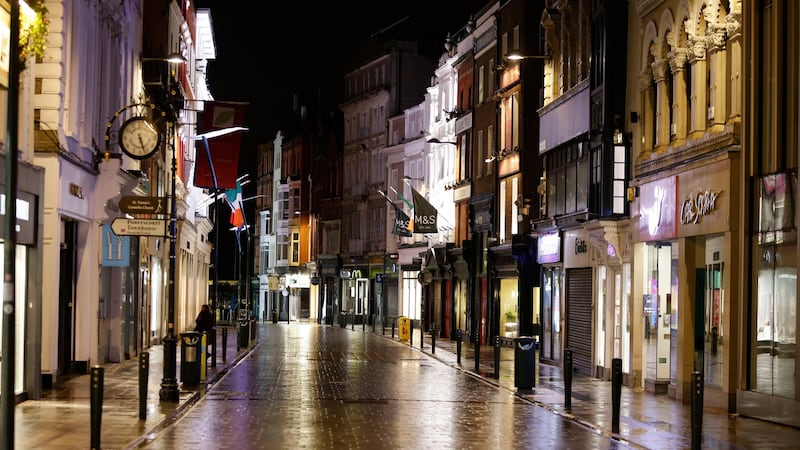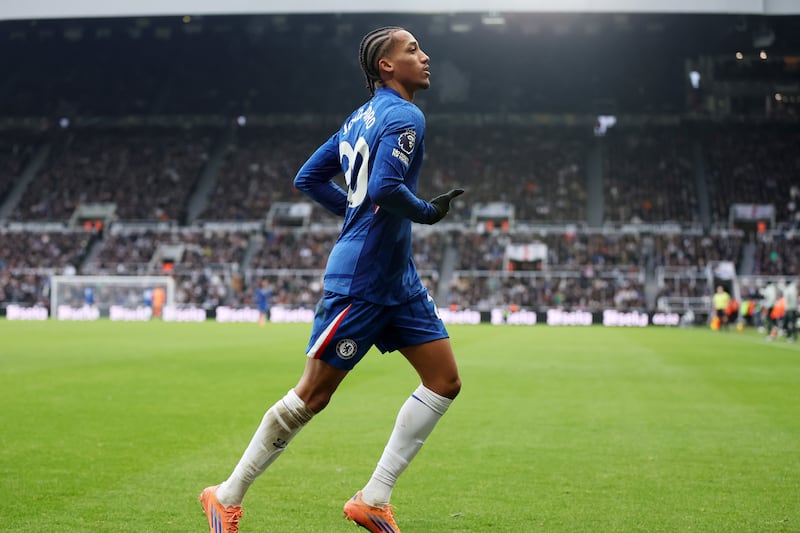At 4.30 on a Thursday afternoon at the height of the third lockdown, there are groups of young people walking in twos or threes on Dublin’s Grafton Street. At the top of the street 29-year-old Mark Logan, a film-maker, is kicking a ball around with a couple of friends.
How does he find the city right now?
“A mixture of beautiful and, I think, undeniably sad,” he says.
It's nice to get rid of the consumerism that's been going on for so long, that we're not just driven to buy and spend, but when you take away that, what's left in the city?
The evenings are particularly depressing, he says, pointing out that it shows up the things the State needs to fix about healthcare and housing. “[It’s] people who have no home to go to or no support network. People who suffer with addiction.”
When he said it was beautiful, what did he mean? “You can hear birdsong,” he says. “You can very vaguely hear the Luas pass by in the background now but without that you’re not hearing traffic, you’re not hearing horns . . . I think your awareness of the natural world is more heightened when you’ve got less of this augmented reality that we’ve built on top of it going on . . .
“I’m not running to get to a meeting or jump on a phone call or to jump on my laptop. I’m walking around Stephen’s Green. I wouldn’t usually do this at this time.”
His friend, 22-year-old actor Jeanne Nicole Ní Áinle, lives on Cork Street. “My whole 5km is the city centre so it’s where I’d be, unfortunately and fortunately. It has its perks, but you miss out on having the sea in your 5km.”
What has it been like in town? “It was really interesting to see [the bigger shops] just empty. It’s nice to get rid of the consumerism that’s been going on for so long, that we’re not just driven to buy and spend, but then on the other side, when you take away that, what’s left in the city? Just these empty buildings that there’s no life in, which is a bit sad.”
How does it affect her as an actor? “You can do auditions but there’s limited filming at the moment . . . I hoped that the pandemic would change the way that we lived [that] we no longer had to spend time wasting time on unnecessary things . . . We didn’t actually need 10 pairs of jeans, you know?”
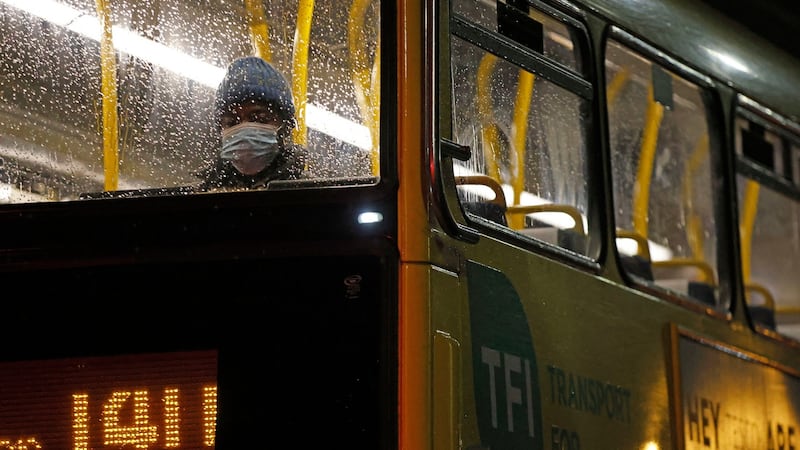
Brendan Callaghan, a retired civil servant living in Clontarf, has come into the city centre “to see if it was still here. It’s too depressing really . . . It’s like a Sunday night in the 1970s. Everything is closed and people are just wandering around . . . There’s more life in Clontarf along the promenade.”
He thinks it’s different to the economic crash back in the noughties because “the whole world is like this so we don’t have this feeling we’re on our own.” He believes when it’s over people will “flip back pretty quickly. People forget.”
Is he optimistic? He laughs. “I have no choice.”
Thirty-five-year-old Clare O’Kennedy is a counselling psychotherapy student out for a walk with a friend. “The first lockdown was completely desolate. The streets were just completely empty . . . I think a lot more people in this lockdown have stayed in town whereas I think in the first lockdown a lot of people went back to their family homes.”
O’Kennedy doesn’t have a garden and she can really feel the lack of green spaces in the city. She thinks the Government is underestimating the mental health impacts of lockdown and mentions a friend who lives alone and spent the whole first lockdown seeing nobody. “Even prisoners aren’t subjected to that.”
Is there anything good about it? She laughs. “The first lockdown, it was nice because I was able to rent bikes and cycle around and not be worried about the traffic [and] there was something kind of nicely eerie about it then because you’d be cycling these main streets and it really felt like a kind of a country village . . . But that gets old. I just want the people back.”
I think the coronavirus is killing a lot of people not because of the virus but the effects of lockdown
There are a lot of delivery cyclists. Just off Grafton Street, a bike courier with broken glasses is balancing some parcels on his handlebars. His name is David and he asks about our “agenda”.
He’s sceptical about Government policy, he says. “I think the coronavirus is killing a lot of people not because of the virus but the effects of lockdown.”
How does he feel the city has been affected? “The only thing that’s different is there’s no shops. You see everyone around the streets.”
He’s been doing the job for only a couple of months. It’s good for his mental health and keeps him fit. “I cycle from nine in the morning till six . . . If it’s busy; I eat my lunch as I’m cycling.”
His job has been made easier by a lack of traffic, though he was hit by a car recently. He broke his glasses and hurt his leg and was off work for a week. “In this job as a courier you’re self-employed, so that means if you crash you’re out of work, and if your bike is broke you don’t get paid. I had to scrape my money last week for rent.”
What happened? “Remember the freak wind? I got the freak wind. It came out of nowhere.”
Moya Richardson McRae is walking near Trinity College with two friends. She lives in the city centre. “Sometimes I’m shocked at the weekends about the amount of people that are in here in town,” she says. “But I’m not mad at it because in the first lockdown town was kind of spooky.”
She’s studying horticulture at the Botanic Gardens but has to do this online. “It’s kind of wrecking my buzz to be honest . . . As a horticulturist, you’d love to see some more green. There are few communal spaces for people to just like exist in. Even the parks close in the evenings . . . The guards are relentless with groups my age; they will not let you sit down anywhere for any prolonged period of time.”
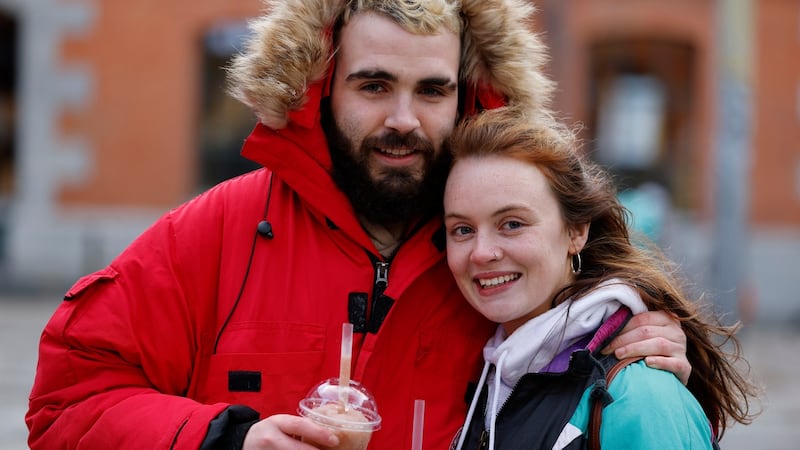
In Temple Bar Square, Eleanor Bourke and Matthew Deasy are leaning against rented bikes, drinking unseasonably-cold, grape-flavoured slushies. “I don’t know why we got these,” says Burke.
They’re the only people here. They live in the city centre. Deasy is a barber, currently out of work due to the pandemic restrictions, while Burke works for a bank and still goes to an office.
What has town been like?
“Apocalyptic, I think,” says Burke.
They’re both saddened by the homelessness. “There’s a lot more tents,” says Burke.
Is there anything positive that they’ve seen? “Graffiti,” says Burke. “Everyone’s out doing art.”
“You don’t always pay attention to this stuff when you’re walking around with your phone on and your headphones in,” says Deasy.
“More stickers,” says Burke. “It’s really nice to look at it . . . when there’s nothing else to do you pay attention to the little small things, I think.”
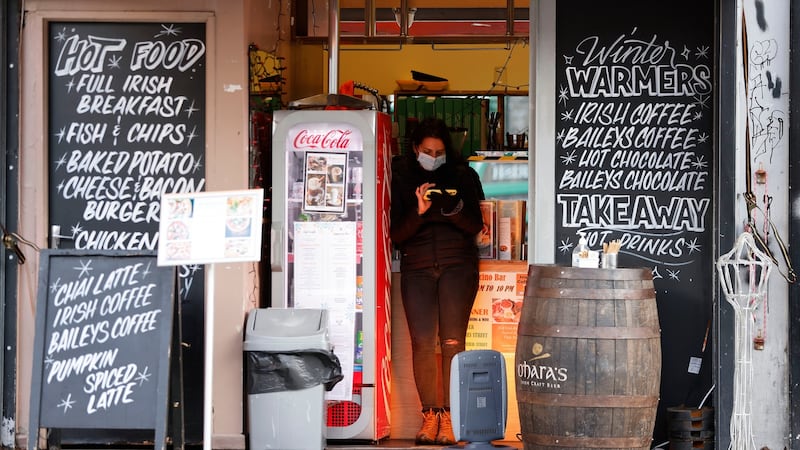
One of the only businesses open on the square is the tiny coffee shop Café Vivaldi, overseen by Thais Fernanda from Brazil. She lives in Dublin 12 with a number of flatmates. She returned to Ireland from Brazil in November after many months when she couldn’t re-enter the country due to the pandemic restrictions. She has had no customers yet.
Who’s still around? She searches for the words. “Drug people,” she says. “Or teenagers sometimes.” Nobody hassles her, she says, but it’s “a little bit scary”.
Her friend who works around the corner drops by as we’re talking to give her some food. She feels lucky to have flatmates to socialise with and she spends her time exercising.
“The same day every day . . . It’s really sad to see the place like this.”
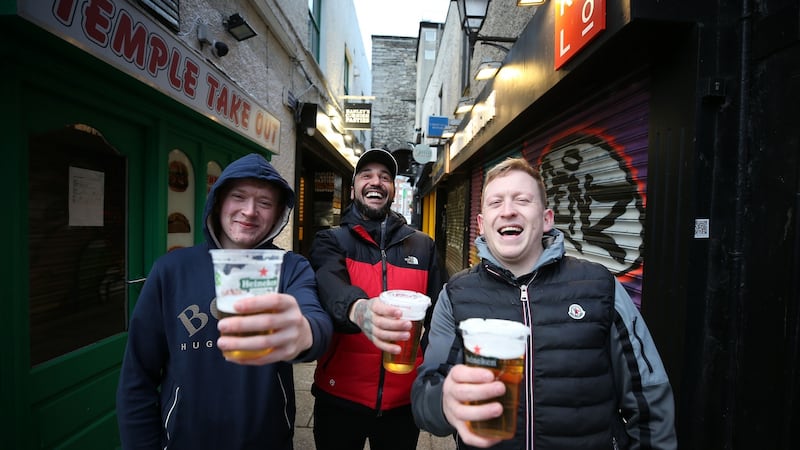
Three Yorkshiremen wander through an empty Temple Bar Square holding pints. They’re steel erectors working on a construction project out by the airport. They came to Dublin about two weeks ago, getting a Covid test before leaving and again after arriving and spending time isolating. They’ll be returning in two or three weeks.
All the restrictions on site are meticulously adhered to, says John Richardson. This trio, travelled together, live together and work together. How do they find Dublin? “If it were all open it would be lovely.”
They discovered a bar which is doing takeaway pints. Their plastic pint glasses have little covers on them. “I think that’s to do with why they can sell them,” says Richardson. “Because they’ve got tops on them. It’s like buying them from Tesco, isn’t it?”
“If it’s an open container they can do you for it,” says his brother Lee.
“I don’t know the rules and regulations around here,” says John.
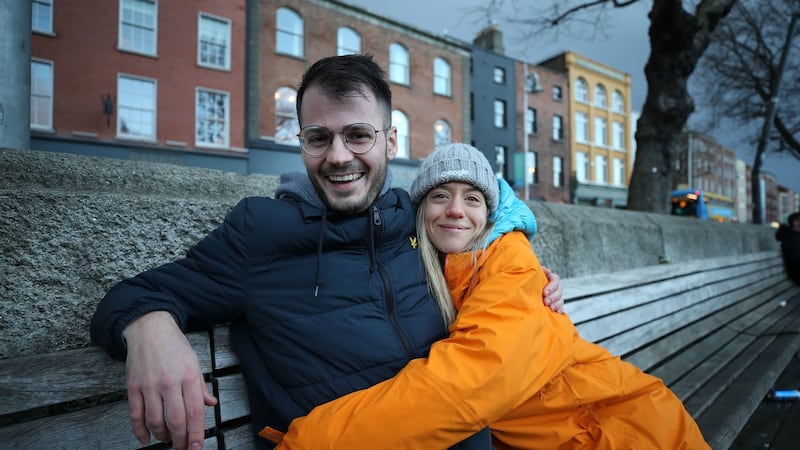
It’s getting dark and cloudy now. As we’re on the Liffey boardwalk talking to people who are sitting on the benches, it begins to hail.
“It’s Dublin 1 so you still see people around but obviously it feels more sad than one year ago,” says a Spanish account manager named Jose Puig. “You stare at people’s faces . . . and there’s not that much happiness in the air.”
“I miss feeling productive,” says Irina Morera, a hairdresser. “I have my routine. I go for walks. I spend time cooking. And I’m sharing an apartment with my boyfriend. So we play boardgames.”
“I think for this year it’s going to be this mood and these restrictions,” says Puig. “Sometimes it’s going to get better, and the Government is going to release us for a bit. But still I think 2021 is going to be pretty rough.”
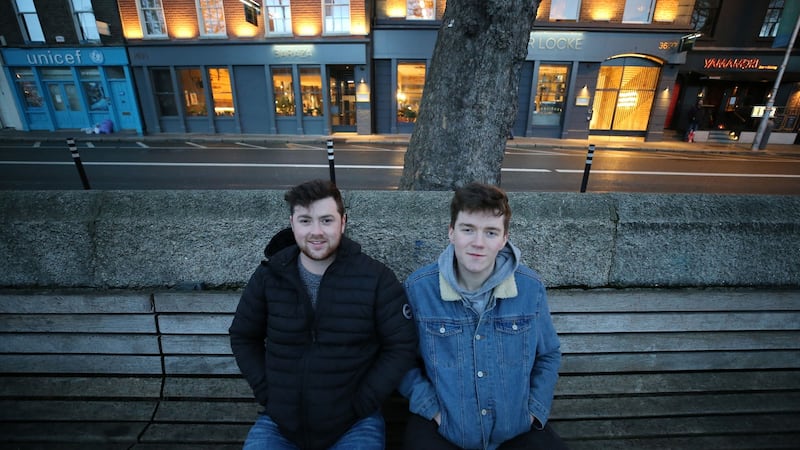
At the next bench sit Robert Grall and his flatmate James Hagan, both from Rathoath in Co Meath. They live in a flat above Sub City, the comic shop where Hagan works. Grall moved here in June. “I just wanted to take the next step and move out, live the apartment life, live Dublin city life, but I haven’t properly experienced that.”
“To be honest, I’d much rather live in Dublin during the pandemic than Rathoath,” says Hagan.
What’s it like in the city? They’re also shocked by the now very visible homelessness. “We live at the bottom of Henry Street and half the shop [doorways] that haven’t been gutted are full of tents now,” says Hagan.
How do they spend their time? They’ve compiled a list of films to watch and they’ve started running. “We said we’d get jacked for when the pubs open in 2023,” says Hagan. “We need to get the dadbod gone so you can gain the dadbod back.”
Is there anything society should learn from this? “Be nice to each other and listen to facts,” he says.
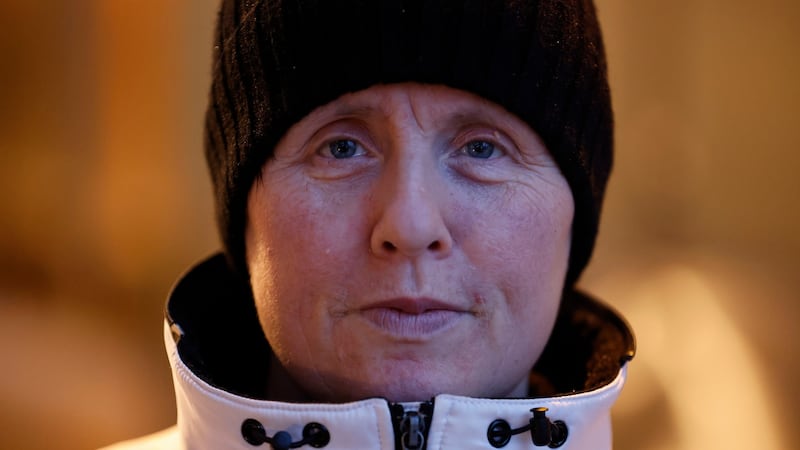
It’s quite dark now and hailing heavily. The streets are clearing of people. June Mongan sees the camera equipment and comes over to show us some pictures she took of the hail. She’s a mother and grandmother and walks around the city a lot.
“I go around talking to different people, let them see they’re not excluded from the community . . . If I see somebody that’s sort of down in themselves, I can talk them back up to feeling good.”
She helps out with several different soup runs for the homeless. She also believes that Covid has been exaggerated by the Government. She’s not the only person I meet who expresses such views.
“I’m not letting this dwell on my mind,” she adds. “If I can get out of my bed in the morning, get my two feet on the floor and get out, that makes my day.”
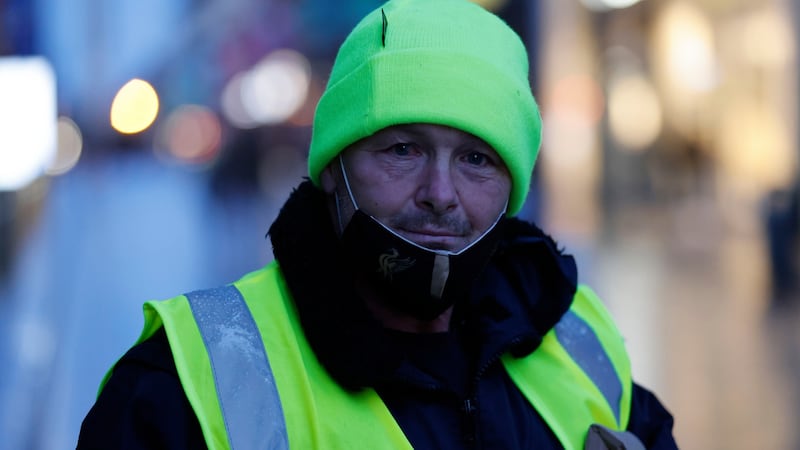
On Henry Street there are tents in many of the doorways. Dublin City Council street-cleaner Robbie Henry is singing to himself as he manoeuvres his electric rubbish cart down the street. There’s a lot less rubbish, he says, but he’d prefer to have the people back because he’s a sociable person.
“You might have seen me in the papers because I’m a mad Dublin GAA man.”
What does he think of the city now? “It’s not right.”
Every night I'd say we would serve in and around 200 people . . . You go down Henry Street now and you'll see a lot of the tents
At 7pm as we reach O’Connell Street we pass some street teams bringing food to the homeless. A family with a pram are huddled under a canopy at a shop that has a Christmas sign declaring, “Tis the Season”.
At the GPO a large group of people, including several families, are gathered around a few tables of food and hot drinks. June Mongan introduces us to one of the organisers, Diarmuid Mac Dubhghlais, who has pictures of both Braveheart and a balaclava-wearing gunman on his facemask.
“There’s a hostel here around the corner and some hubs nearby,” he says. “And some come from further out knowing that we’re here . . . Every night I’d say we would serve in and around 200 people . . . You go down Henry Street now and you’ll see a lot of the tents and unfortunately this week gone there was a lad died on Moore Street . . . There’s a little tent city down there.”
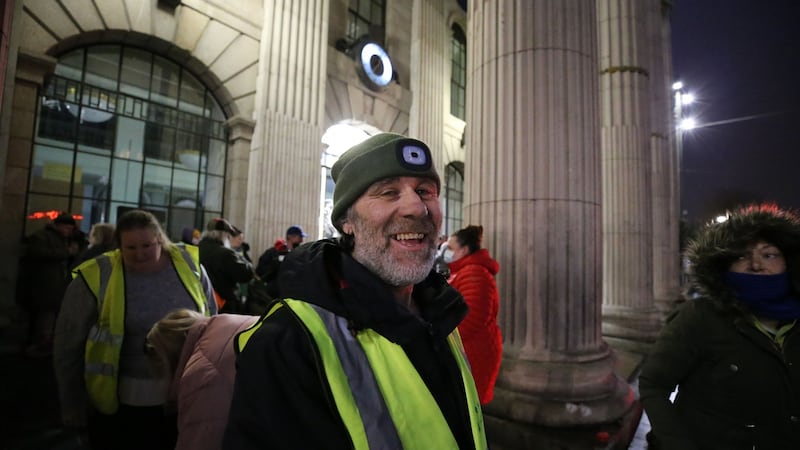
A lot of restaurants that couldn’t open up have been donating meals for nothing. Though he believes some landlords are still evicting people, he is hopeful that it’s making others more caring. He points to a car and says: “That was the fourth car tonight that dropped something in.”
He tells me about an older man who comes in from a north Dublin suburb just to get a cup of tea and a chat. “He said ‘Dougie if it wasn’t for coming in here meeting people getting the food off you I contemplated stepping on front of a bus’ . . . I felt terrible and also felt ‘Well, thank God I was here’.”
Me and my partner used to stay at the Ilac Centre and then we got a tent and moved down to the Museum of Art and we were staying there for a while
As the sky darkens the casual walkers and commuters disappear and what remains are a scattering of people waiting for buses and Luases, gardaí, homeless people, delivery cyclists, teenagers and street teams engaging with the homeless. On O’Connell Street there’s some open drug dealing.
Some young people with a trolley full of food are sheltering from the rain in the GPO Arcade. They’re volunteers with Dublin Homeless Awareness.
“It gives us something to do,” says Tyler Moran. “I feel like I’m actually doing something, giving something back to the world by helping the people who are on the streets . . . You’d have a few people saying, ‘You actually made my night’.”
“They’re great kids,” says a woman named Sandra. She says town feels more dangerous to her than it has in the past.
“Me and my partner used to stay at the Ilac Centre and then we got a tent and moved down to the Museum of Art and we were staying there for a while . . . We were moved on nicely by the guards, then went back out to my area in Bray and stayed in a car park for a while. We were moving around a lot.”
She points down Henry Street: “Down there they’d be fighting all night long.”
Dublin Homeless Awareness’s founder, a young trainee paramedic called Brandon O’Connor, explains that some of them are “first responders” who can deliver basic first aid to the homeless people they meet.
“It could be an ulcer on their leg. Infected hands . . . A lot of the stuff we have to make them go to hospital because it could get worse.”
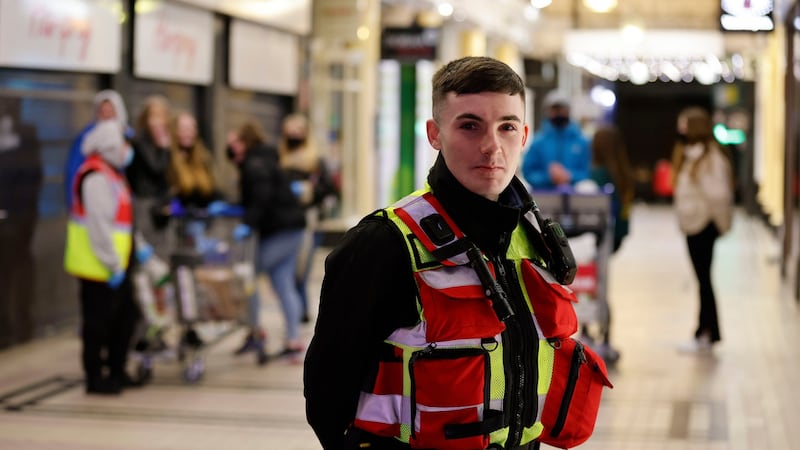
He started this as a transition-year project because members of his own family had experienced homelessness and addiction. Nowadays they see 100 to 200 people every night. For homeless people it’s challenging now because there’s no one to ask for money and nobody to talk to.
“There’s definitely a feeling of loneliness in the city centre,” he says. “After nine o’clock now there won’t be many people walking around . . . That’s why we’re out. The chat can help as well. It’s more about the chat than giving them the cup of tea and sandwich . . .
“People think it’s dead in here for us but it’s not. When it’s quiet in here it’s much more busy.”
